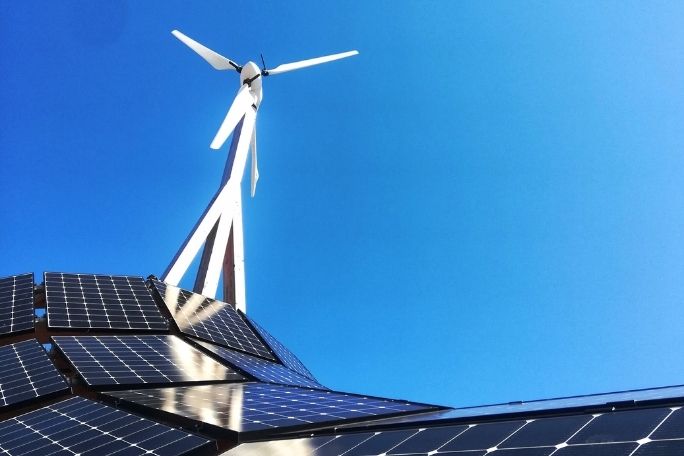Lesson summary
Students will assess which type of renewable energy would be best for their school by recording the weather over a set period of time. Students will decide whether solar power, wind power or hydro power would be most suitable for their school based on the total number of windy, rainy or sunny days.
Learning intentions:
Students will...
- recognise different types of renewable energy
- understand how to monitor and record daily weather information.
Lesson guides and printables
Curriculum links
Select your curriculum from the options below.
Lesson details
Curriculum mapping
Australian curriculum content descriptions:
Foundation Science:
- Daily and seasonal changes in our environment, including the weather, affect everyday life (ACSSU004)
Foundation Mathematics:
- Represent practical situations to model addition and sharing (ACMNA004)
Year 1 Science:
- Observable changes occur in the sky and landscape (ACSSU019)
- Respond to and pose questions, and make predictions about familiar objects and events (ACSIS024)
Year 2 Science:
- People use science in their daily lives, including when caring for their environment and living things (ACSHE035)
- Respond to and pose questions, and make predictions about familiar objects and events (ACSIS037)
Year 1 Mathematics:
- Represent and solve simple addition and subtraction problems using a range of strategies including counting on, partitioning and rearranging parts (ACMNA015)
Year 2 Mathematics:
- Solve simple addition and subtraction problems using a range of efficient mental and written strategies (ACMNA030)
- Use a calendar to identify the date and determine the number of days in each month (ACMMG041)
Foundation and Years 1 & 2 Music:
- Sing and play instruments to improvise, practise a repertoire of chants, songs and rhymes, including songs used by cultural groups in the community (ACAMUM081)
- Create compositions and perform music to communicate ideas to an audience (ACAMUM082)
Syllabus outcomes: ST1-9ES, ST1-4WS, STe-7NE, ST1-8ES, MAe‑1WM, MAe‑2WM, MAe‑3WM, MAe‑5NA, MA1‑1WM, MA1‑2WM, MA1‑3WM, MA1‑5NA, MA1-13MG.
Time required: 10 minutes introductory discussion, 5 minutes daily over length of time set by teacher, one session for closing discussion.
Level of teacher scaffolding: High – oversee daily monitoring and recording of weather, facilitate discussion and closing activity.
Resources required
- Student Worksheet
- Musical instruments
- Recording device (such as a tablet or phone)
Additional info
This lesson has been developed in partnership with
Hydro Tasmania.
Hydro Tasmania has been at the forefront of clean energy innovation for one hundred years. It is Australia’s largest producer of clean energy – generating hydro and wind power – and the largest water manager. Hydro Tasmania has 55 major dams, operates 30 hydropower stations and has built some of Australia’s largest wind farms.
Hydro Tasmania also sells energy in the National Electricity Market through its retail business Momentum Energy, and sells its expertise internationally through its consulting business Entura.
Visit the Hydro Tasmania website to learn how the business is working towards Australia’s clean energy future.


Welcome back!
Don't have an account yet?
Log in with:
Create your free Cool.org account.
Many of our resources are free, with an option to upgrade to Cool+ for premium content.
Already have an account?
Sign up with:
By signing up you accept Cool.org's Terms and Conditions(Opens in new tab) and Privacy Policy(Opens in new tab).